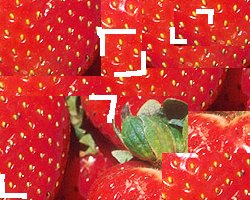
A little specialist, but whatever.
Wednesday, December 17, 2008
A toy of sorts, that randomly generates fantasies and complexes in the style of Lacan, built up from some mathemes that he commonly used. I have derived some modest pleasure from it.
It can be found here.
There is a very rough key to the symbols that I assembled when I was writing it here.

You might not have noticed the switcharoo what I performed in my posting of this, but whatever.
Here‘s a modified version of some earlier code I write, this time pared down to generate some semiotic square templates as opposed to analogic square templates. I don’t find them anywhere as amusing, but I guess it has some worth of its own anyway…

The phase has passed for the most part, but I thought it was worth archiving anyway...
Thursday, October 30, 2008
A copied/pasted selection of a thread from tigsource. There is certain amount of extra discussion there, but all the actual analyses are copied below. It’s a little messy (especially the opening description, which might anger some specialists immensely, should they be unfortunate enough to stumble across this page), for which I apologise.
After having played about a little bit today with things relating to structuralism, I thought it might be fun to try to apply Levi-Strauss‘s canonical formula of mythology to some games. (the closest I could find to a discussion of this nature on the web was this rather elementary discussion on gamedev.net).
The canonical formula looks like:

It’s supposed to depict some sort of transformation, with the fraction on the left representing some sort of relationship between the numerator and the demoninator, the arrow in the middle representing the transformation, and the fraction on the right a relationship between the permuted contents of its numerator and denominator. Basically, you can fill it out however you want. a-1 is supposed to be some sort of opposite of a. Also, generally either a and b represent characters, and x and y represent some properties, or vice versa. And generally f doesn’t mean anything. (I take that back. f indicates that there’s a functional relationship between its two arguments. ‘functional relationship’ means that one of its arguments is a property of the other, or is an action performed on/by the other. Basically by ‘meaningless’ I mean ‘not a variable’).
It all is a bit arbitrary, but there’s certainly a knack to describing things using it. Actual analyses follow below the fold
Continue reading ›

and what might one oppose to that most delicious of fruits: the strawberry?
Saturday, October 4, 2008
Following a brief elopement with Levi-Strauss earlier this year, I found myself one evening tinkering with a small program to generate semiotic/analogic squares.
Given two pairs of ‘opposites’ (a,b) and (c,d), one can construct a square by juxtaposing different elements from each pair.
For instance, we might get this
body
bad |
body
good |
mind
bad |
mind
good |
While reading this book, I came across a similar interpretation of Levi-Strauss’s canonical formula (more about which I will write in a future post) the form of which I’m sure you’ll be able to see by looking at a single example for a moment:
technology
ends
mental |
-> |
technology
means
mental |
nature
ends
mental |
nature
means
physical |
This interpretation is given by Racine, and is not explicit in Levi-Strauss’s original work. I don’t find it especially rich either as interpretations go, but it was interesting to look at the results it could produce.
The resulting program may be seen here.



